The word ‘tambdi’ means red in Goan/Konkani language. ‘bhaji’ means vegetables or a dish made from veggies. So either ways, red amaranth is called as tambdi bhaji and so is the dish made with these reddish hued leaves also called as tambdi bhaji. This one dish used to feature in our menu back home. Then and even now I am fond of this onion & fresh coconut laced red amaranth recipe. I can just have this sauteed amaranth leaves with plain steamed rice or pav/bread rolls or chapatis. This also would be my tiffin box lunch with some chapatis. In Goa, we get red amaranth abundantly and hence this dish is commonly made there. When I get red amaranth, I usually make this recipe or red amaranth sambar. Not yet ventured into making anything with red amaranth. On occasions, I make the same recipe with green amaranth. This recipe is vegan as well as gluten free. You can easily scale the recipe to make a bigger or smaller batch. This healthy tambdi bhaji can be served as a side dish with a dal and rice combination. You can also just have it plain with steamed rice or chapatis or bread.
How to make Tambdi Bhaji
- Pluck the amaranth leaves with the tender stems. Then rinse these very well in water and then drain the water. I used 250 grams amaranth leaves, which yielded about 4.5 cups of finely chopped amaranth.
- Chop them finely and keep them aside.
- In a pan or kadai, heat 2 tablespoons of oil. You can neutral flavored oil.
- Add ⅓ cup chopped onions, 1 teaspoon chopped green chilies and 1 teaspoon chopped garlic.
- Stir well and saute till the onions have softened and become translucent.
- Add ¼ teaspoon turmeric powder. Stir.
- Then add the chopped amaranth leaves.
- Stir and mix very well. Add salt according to taste.
- Stir and mix again.
- Cover the pan or kadai with a lid and let the amaranth leaves cook on a low heat.
- Do check at intervals and if the moisture or water has dried up or if the leaves are sticking to the pan, add ¼ to ⅓ cup water. Stir, cover the pan and continue to cook.
- When the amaranth leaves are softened and cooked, add ⅓ cup of grated coconut. It takes about 10 to 12 minutes on a low heat for the amaranth leaves to cook completely.
- Stir again and mix very well.
- Cover again and simmer on a low heat for 2 to 3 minutes.
- Switch off the heat. There should be no water in the dish. If there is any water, then evaporate the extra water by simmering without the lid. Check the taste and add more salt if required.
- Serve tambdi bhaji hot or warm as a side dish with dal-rice or with chapatis or bread. Try to finish the bhaji as soon as you can. Since coconut is added to the dish. If you are looking for more healthy Vegetable Recipes then do check:
Val papdi bhajiBhindi bhajiFrench beans recipeTomato bhajiVangyachi bhaji
Please be sure to rate the recipe in the recipe card or leave a comment below if you have made it. For more vegetarian inspirations, Sign Up for my emails or follow me on Instagram, Youtube, Facebook, Pinterest or Twitter. This Tambdi Bhaji post from the blog archives first published in February 2015 has been updated and republished on December 2022.
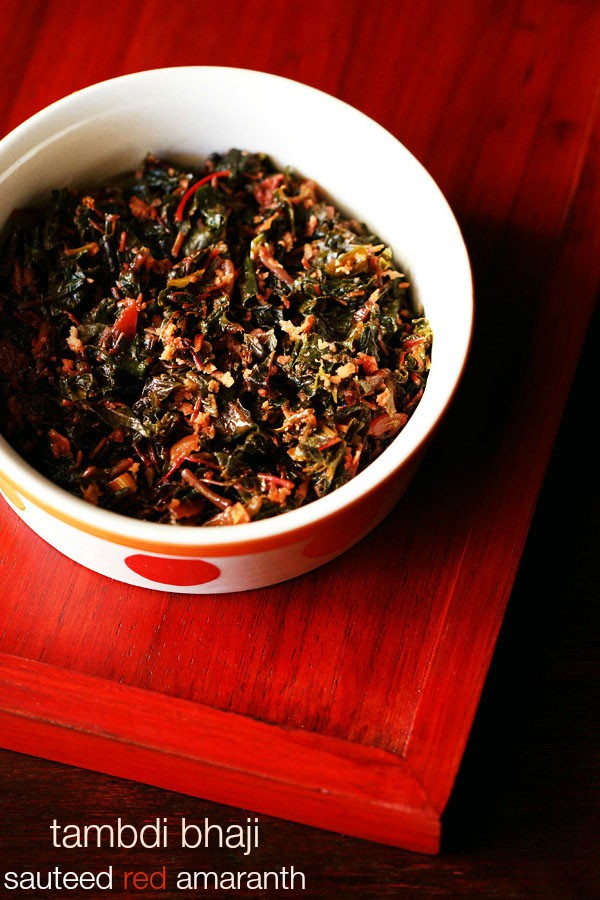
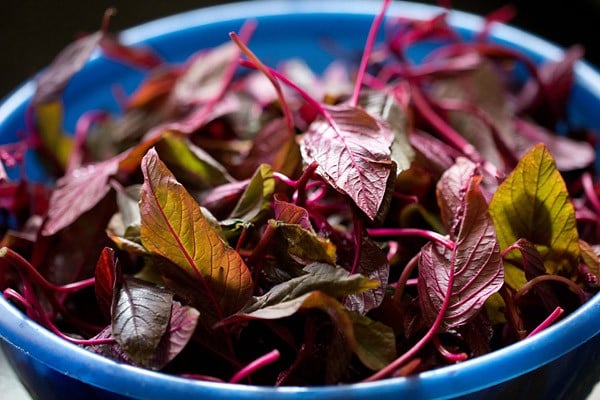
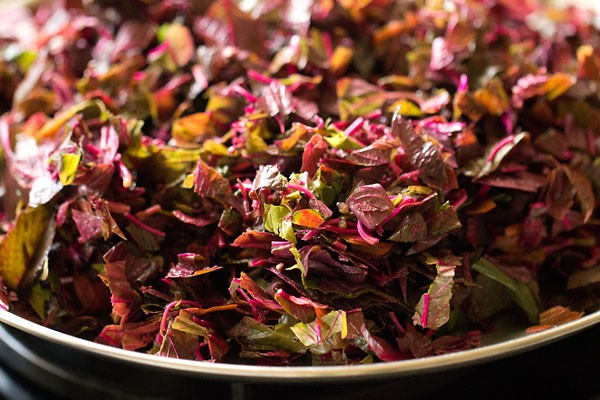
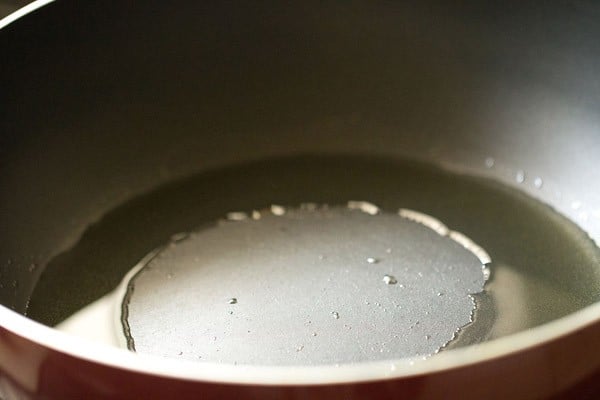
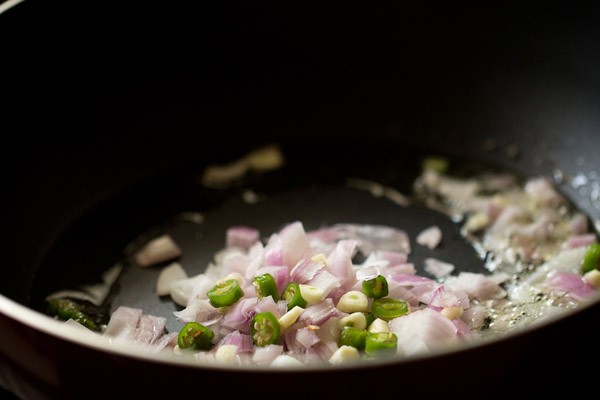
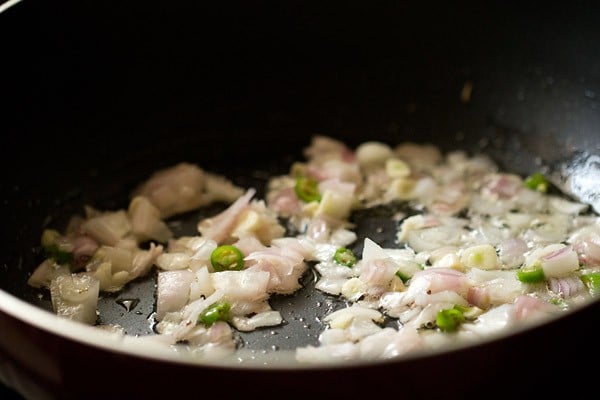
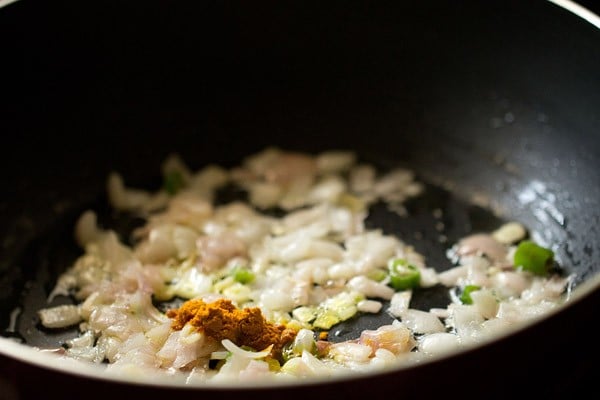
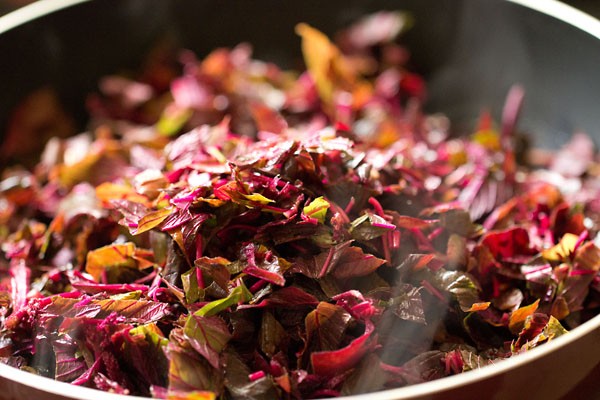
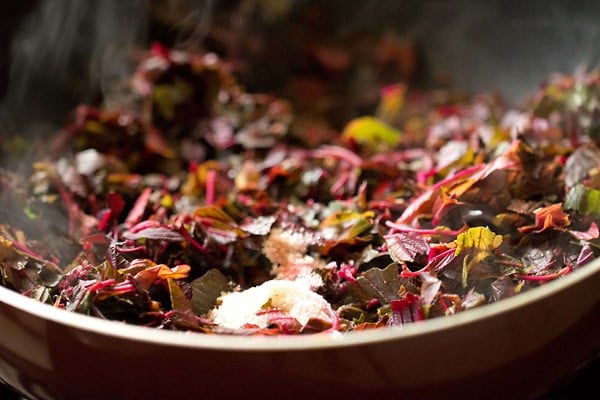
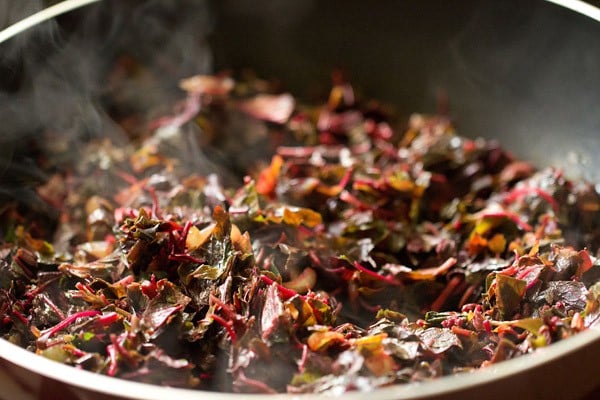

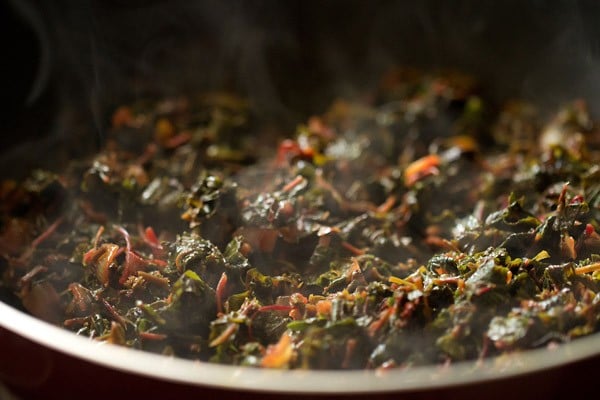
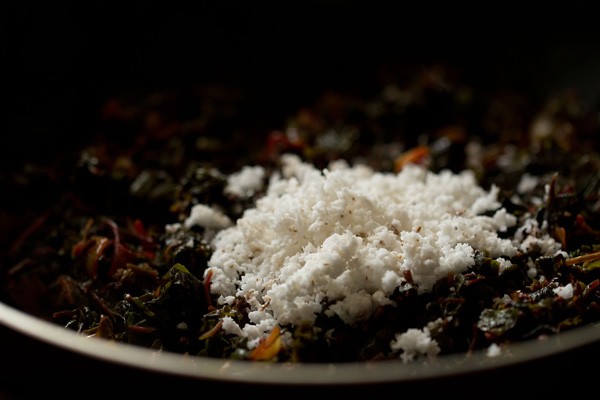
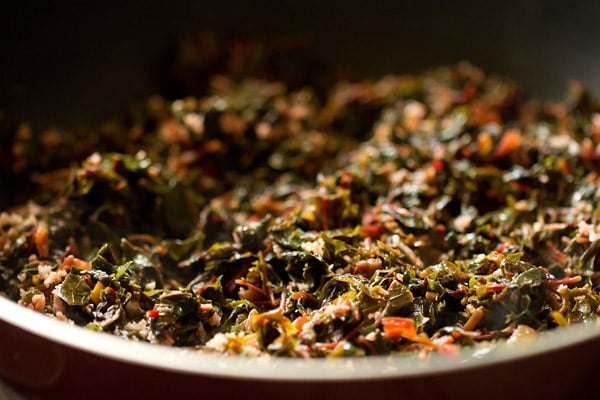

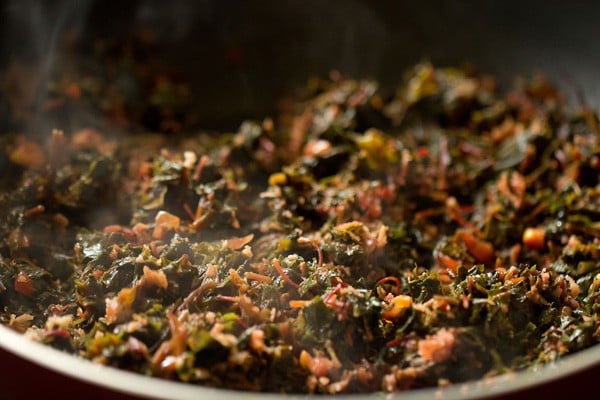
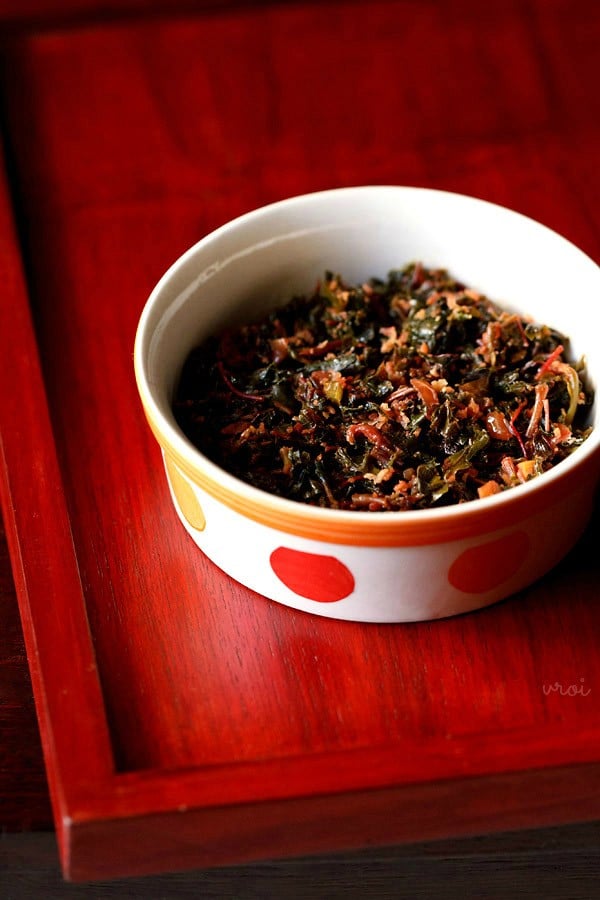
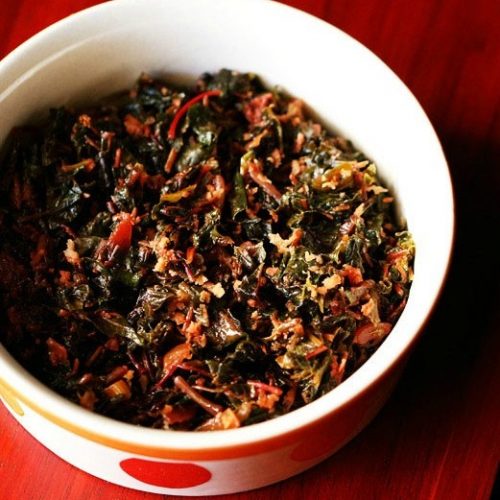
title: “Tambdi Bhaji Red Spinach Recipe Goan Red Amaranth Recipe” ShowToc: true date: “2024-09-11” author: “Brian Maslow”
The word ‘tambdi’ means red in Goan/Konkani language. ‘bhaji’ means vegetables or a dish made from veggies. So either ways, red amaranth is called as tambdi bhaji and so is the dish made with these reddish hued leaves also called as tambdi bhaji. This one dish used to feature in our menu back home. Then and even now I am fond of this onion & fresh coconut laced red amaranth recipe. I can just have this sauteed amaranth leaves with plain steamed rice or pav/bread rolls or chapatis. This also would be my tiffin box lunch with some chapatis. In Goa, we get red amaranth abundantly and hence this dish is commonly made there. When I get red amaranth, I usually make this recipe or red amaranth sambar. Not yet ventured into making anything with red amaranth. On occasions, I make the same recipe with green amaranth. This recipe is vegan as well as gluten free. You can easily scale the recipe to make a bigger or smaller batch. This healthy tambdi bhaji can be served as a side dish with a dal and rice combination. You can also just have it plain with steamed rice or chapatis or bread.
How to make Tambdi Bhaji
- Pluck the amaranth leaves with the tender stems. Then rinse these very well in water and then drain the water. I used 250 grams amaranth leaves, which yielded about 4.5 cups of finely chopped amaranth.
- Chop them finely and keep them aside.
- In a pan or kadai, heat 2 tablespoons of oil. You can neutral flavored oil.
- Add ⅓ cup chopped onions, 1 teaspoon chopped green chilies and 1 teaspoon chopped garlic.
- Stir well and saute till the onions have softened and become translucent.
- Add ¼ teaspoon turmeric powder. Stir.
- Then add the chopped amaranth leaves.
- Stir and mix very well. Add salt according to taste.
- Stir and mix again.
- Cover the pan or kadai with a lid and let the amaranth leaves cook on a low heat.
- Do check at intervals and if the moisture or water has dried up or if the leaves are sticking to the pan, add ¼ to ⅓ cup water. Stir, cover the pan and continue to cook.
- When the amaranth leaves are softened and cooked, add ⅓ cup of grated coconut. It takes about 10 to 12 minutes on a low heat for the amaranth leaves to cook completely.
- Stir again and mix very well.
- Cover again and simmer on a low heat for 2 to 3 minutes.
- Switch off the heat. There should be no water in the dish. If there is any water, then evaporate the extra water by simmering without the lid. Check the taste and add more salt if required.
- Serve tambdi bhaji hot or warm as a side dish with dal-rice or with chapatis or bread. Try to finish the bhaji as soon as you can. Since coconut is added to the dish. If you are looking for more healthy Vegetable Recipes then do check:
Val papdi bhajiBhindi bhajiFrench beans recipeTomato bhajiVangyachi bhaji
Please be sure to rate the recipe in the recipe card or leave a comment below if you have made it. For more vegetarian inspirations, Sign Up for my emails or follow me on Instagram, Youtube, Facebook, Pinterest or Twitter. This Tambdi Bhaji post from the blog archives first published in February 2015 has been updated and republished on December 2022.

















